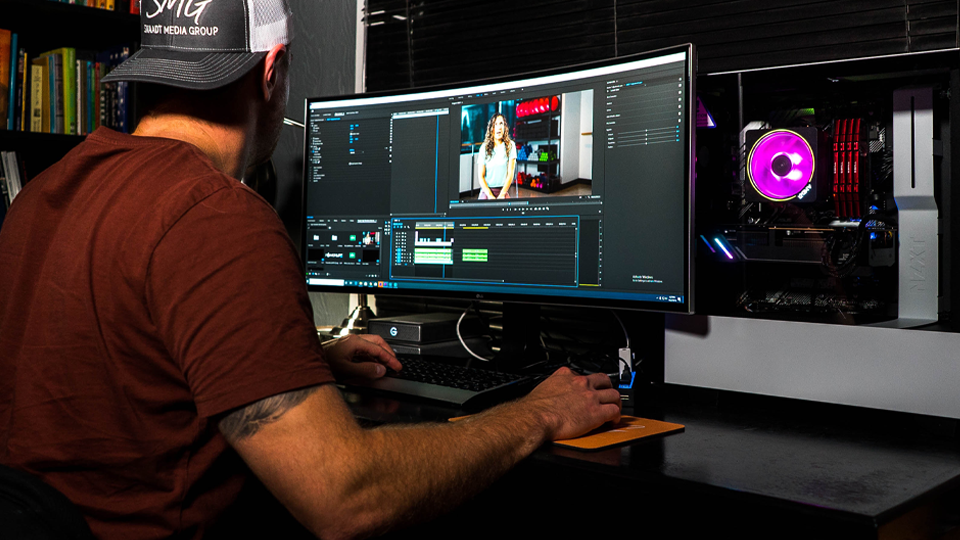The cartoons that shaped Hollywood: 10 classic animations that still inspire

Samuel Taggart

15 Minutes

Animated movies aren’t just for kids—this imaginative artform brings fantasy worlds to life, blurring the lines between reality and reverie.
There’s nothing quite like being transported into another world. Yes, of course, this isn’t really something you can do. We’re talking about animated movies and that moment when the lights dim in the movie theater, the movie begins to play and anything is possible. Whether an artful piece that tells its story through meticulously illustrated frames or a Pixar blockbuster that leans on the newest computer tech to bring these fantasy worlds to life on the screen, animated movies offer a magical experience to audiences of all ages. While the genre has a reputation for being childish, But many animated films have paved the way for today’s most imaginative stories. Here we’re celebrating 10 of the most influential animated movies.
Fantasia (1941)
When it was released in the early 1940s, Disney’s Fantasia earned immediate recognition as a first-of-its-kind masterpiece blending animations and music. Inspired by a meeting between Disney creatives and the conductor of the Philadelphia Orchestra, Fantasia pairs eight powerful orchestral movements with eight illustrated stories that bring the songs to life in a way only Disney’s animators could imagine. Fantasia is a triumph in animation worth everyone’s time.
Fantastic Planet (1973)
Fantastic Planet, or “La Planète sauvage” in its native French, is one of the trippiest things you will ever watch. We guarantee that. Developed by French animator René Laroux and his team of surrealist-inspired illustrators, it’s an experimental film that will make you question everything. Somewhere in the distant future, humans live on a strange planet dominated by blue humanoid aliens who treat humans as animals… and the story unfolds from there, presenting audiences with a whirlwind of stunning illustrations and storytelling that is sure to wow even the most open-minded indidvudials.
The Triplets of Belleville (2003)
Offering the audience little dialogue but plenty of quirky, oddly beautiful illustrations, this beautifully crafted short film from the mind of Sylvain Chomet relies mostly on its score and pantomime to bring its narrative to life—a grandmother trying to find her granson, a Tour de France cyclist, who has been taken captive by the French mob for gambling reasons. While the movie is certainly “easy on the eyes” thanks to the whimsical illustrations that populate the screen, the movie is equally captivating for its twisting, turning plot.
Yellow Submarine (1968)
The Beatles are coveted for their music but lesser known for their forays into film. The exploded to popularity in the 1950s and 1960s and, through this success, was able to explore creative avenues beyond music. Yellow Submarine was the second feature-length film released by The Beatles and is an adventure/comedy/fantasy “jukebox” film that pits the band’s music alongside fantastical illustrations. Knowing that the music was heavily influenced by the band’s use of mind-altering substances, you can expect all the same craziness in visual form from this flick.
Steamboat Willie (1928)
Credited as the first cartoon to sychonize audio and video, and the first cartoon to feature its own customized soundtrack, Steamboat Willie is pivotal for many reasons. While the storyline here is simple, this segment earns its place on this list for its technical achievements, which, at the time, were groundbreaking for the animation industry.
The Secret of Nimh (1982)
The Secret of Nimh is another example of a non-Disney animation that has stood the test of time. Following a family of mice who must find a new home before the farmer plows theirs away, this fantasy tale is animation for all ages. Dark and deep enough for adults to appreciate but whimsical and lively for children to enjoy, The Secret of Nimh endures after all these years.
The Red Turtle (2016)
Without dialogue, The Red Turtle relies completely on animations and music to move the audience through its narrative, and does so with a delicacy and intimacy that drives home the film’s emotional plot. Stranded on a desert island, the protagonist must make ends meet—but is then greeted by a curious red turtle and the story then unfolds. Acclaimed for its rich, absorbing animations and world-building, this film is a masterpiece from the maestros at Studio Ghibli.
The Old Mill (1937)
Before computer-generated animations, illustrators had to draw every scene of an animated movie by-hand. This is true in Disney’s classic, The Old Mill, which showcases the animators’ newfound ability to bring animals to life on the screen. Captivating audiences when it first released, this short film is an explicit example of the progression of animation. Without this film pioneering animal movements in the animation world, who knows what would’ve happened…
The Iron Giant (1999)
Many popular animated movies come from the same production companies—thanks to Disney and Pixar's mastery of the craft. But The Iron Giant comes from a different director and producer, and has stood the test of time against other well-known classics. Widely regarded as a cult classic and one of the finest examples of animated film produced in the modern age, The Iron Giant is a movie that endures long after its finished with its last line, “You are who you choose to be,” echoing throughout its final moments.
The Adventures of Prince Achmed (1926)
One of the first movies to ever use stop-motion animation, The Adventures of Prince Achmed is a short movie taken straight from your university’s film studies course. This film merges the technical prowess of animation and puppetry, blending the two into a visually stunning representation of a well-known fairy tale. Recognized as the oldest example of animation, this film is a must-see for film buffs and movie-going novices, alike.



































